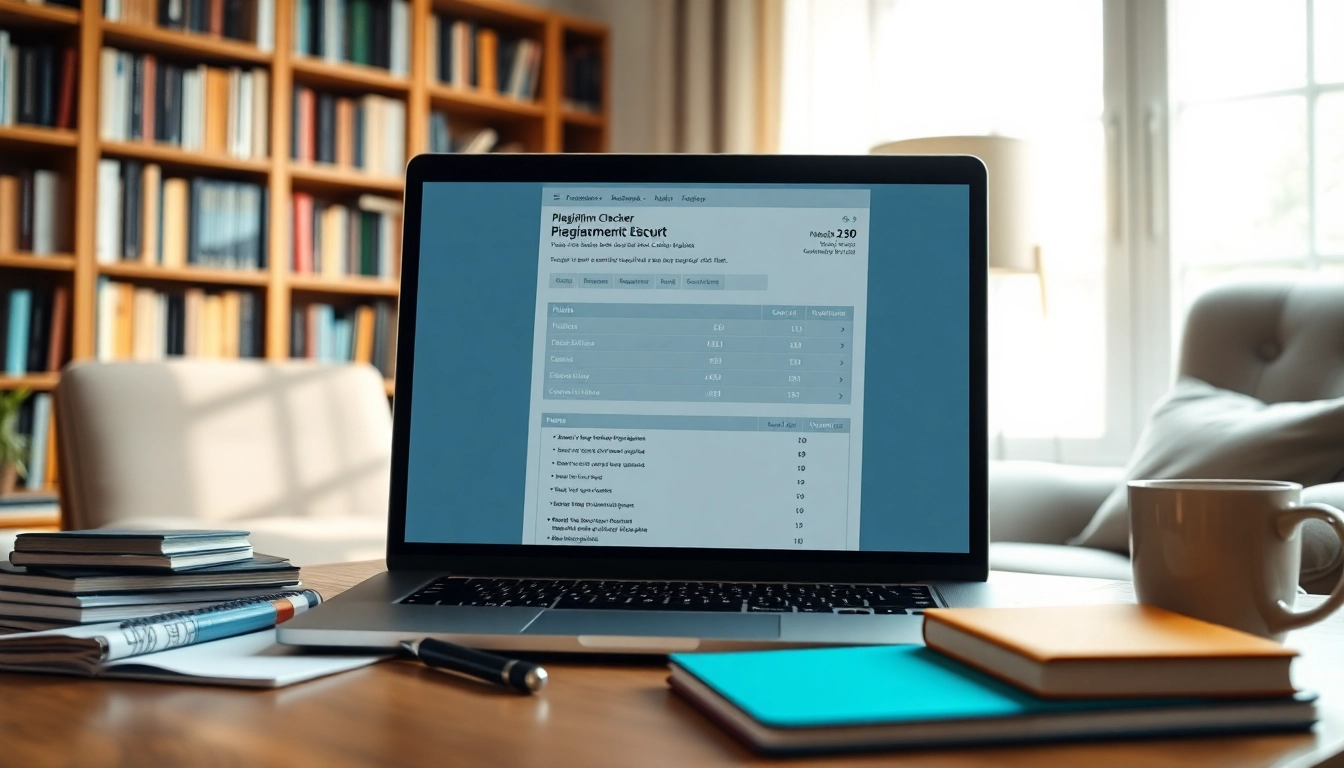Understanding the Importance of a Plagiarism Checker
In today’s digital age, the integrity of written content is more critical than ever. With the proliferation of information available online, the lines between original thought and borrowed ideas have blurred dramatically. This reality makes the use of a plagiarism checker essential for anyone engaged in writing, whether they are students, educators, or professionals. By understanding the importance of these tools, one can better appreciate how they protect both the writer and the intellectual property of others.
What is plagiarism, and why is it a concern?
Plagiarism is the act of using someone else’s work, ideas, or intellectual property without proper acknowledgment. This unethical practice can manifest in various ways, such as copying text verbatim, paraphrasing without credit, or even self-plagiarizing. The concern with plagiarism extends beyond academic dishonesty; it raises ethical questions about trust, integrity, and respect for the intellectual work of others.
How plagiarism checker tools work
Plagiarism checkers employ algorithms that scan submitted content against a vast database of publications, articles, and web content. These sophisticated systems utilize techniques such as fingerprinting, string matching, and semantic analysis to identify similarities. When a text is analyzed, the tool highlights potential instances of plagiarism, providing users with the opportunity to revise and appropriately cite their sources.
The impact of plagiarism on academic integrity
In academic settings, the ramifications of plagiarism can be dire. Students caught plagiarizing may face disciplinary action, including failing grades or expulsion. More broadly, plagiarism undermines the value of educational qualifications and the rigor of academic pursuits. Maintaining academic integrity through proper citation and original work is critical to fostering a culture of respect and authenticity in educational institutions.
Features to Look for in a Plagiarism Checker
Not all plagiarism checkers are created equal. When selecting the right tool for your needs, it’s vital to consider the following features:
Accuracy and speed of results
A quality plagiarism checker should deliver results quickly without sacrificing accuracy. Tools that provide instant feedback allow users to make necessary corrections before finalizing their work. Advanced algorithms that compare text against up-to-date databases ensure users receive reliable assessments of originality.
User-friendly interface and accessibility
The effectiveness of a plagiarism checker is also determined by its ease of use. A clear, intuitive interface allows users to upload or paste content seamlessly. Accessibility across devices enhances usability, ensuring that students and professionals can check their work from anywhere, using any device.
Additional features like grammar checks
While the primary function of a plagiarism checker is to detect copied content, additional features can enhance its value. Integrated grammar and spell-checking tools help improve the overall quality of the writing, offering a more comprehensive editing solution that ensures both originality and linguistic accuracy.
How to Use a Plagiarism Checker Effectively
To derive maximum benefit from a plagiarism checker, users need to understand how to utilize it effectively. Here are essential steps and tips to consider:
Steps to analyze your content
Begin by gathering your text. Most tools allow for multiple formats, including plain text and various document types. Once your content is ready, upload it into the plagiarism checker. Some tools provide additional options, such as adjusting the sensitivity of the scan or selecting specific databases for comparison, which can be useful depending on your needs.
Interpreting the plagiarism report
The output from a plagiarism checker typically includes a report that highlights matched text and indicates its sources. Understanding this report is crucial; look for percentages of similarity to assess potential issues. A high percentage may require further investigation and editing, while a lower percentage might indicate acceptable originality, depending on context.
Best practices for revising detected issues
Once you identify sections of text flagged for potential plagiarism, take the time to revise them carefully. Proper citation, paraphrasing, or the introduction of original content can resolve these issues. Moreover, ensure that any revisions maintain the intent and clarity of your initial message. It’s also helpful to recheck the final draft with the plagiarism checker after making changes to confirm that no new issues have arisen.
Common Misconceptions about Plagiarism Checkers
Despite their increasing popularity, several misconceptions about plagiarism checkers persist. Addressing these can help users leverage these tools more effectively.
Aren’t plagiarism checkers only for students?
Many believe that plagiarism checkers are solely tools for students, but this is far from the truth. Writers, researchers, content creators, and professionals across various fields should use these tools. Maintaining originality is paramount in any written work, making plagiarism checkers invaluable in ensuring quality and integrity in any context.
Can a plagiarism checker catch all forms of plagiarism?
While plagiarism checkers are powerful tools, they are not infallible. They excel at identifying direct copying and common paraphrasing but may struggle with nuanced examples of plagiarism, such as mosaic plagiarism or more sophisticated forms of idea theft. It’s essential for users to remain vigilant and understand that a plagiarism checker should complement their efforts in maintaining academic and ethical integrity.
Is it safe to use online plagiarism checker tools?
When choosing a plagiarism checker, users should be mindful of the privacy and security measures in place. Reputable tools often provide assurances about data security and do not store submitted documents. Users should avoid less-known or free tools, which may compromise sensitive information or intellectual property. It’s crucial to read the privacy policies of these services before submission.
Future Trends in Plagiarism Detection
The field of plagiarism detection is evolving rapidly, driven by advancements in technology and shifting educational paradigms. Here are some potential future trends to watch:
The role of AI in plagiarism checking technology
Artificial intelligence is set to revolutionize plagiarism detection. More sophisticated algorithms that leverage machine learning will enhance identification accuracy, minimizing false positives while detecting intricate forms of plagiarism. These advancements will facilitate more nuanced understanding, offering insights beyond mere text comparison.
Potential challenges and limitations
As tools become more advanced, challenges remain—such as the need to adapt to evolving definitions of plagiarism and ensuring comprehensive coverage of unique content databases. Additionally, ensuring accessibility and usability will be essential to keep pace with diverse user needs, particularly in educational settings where awareness and adaptability to new technology is key.
What to expect in the future of plagiarism detectors
In the future, users can anticipate plagiarism checkers that not only identify copied text but also analyze the quality of original content. Emerging features may include contextual analysis, which evaluates the appropriateness of citations or the creativity of content. By transforming plagiarism checkers into holistic writing tools, users will receive invaluable feedback that extends beyond detection to enhancement of writing quality.



